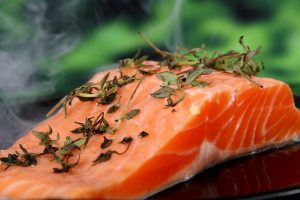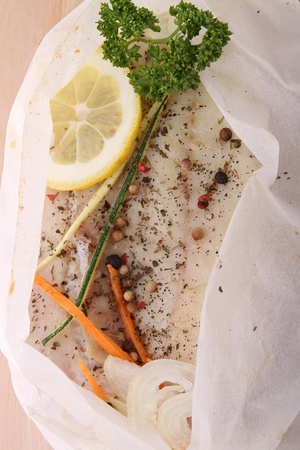In a recent video on my Facebook Page, I talked about good fats.
Super important!
But it’s the right kind of fats which are important…
One of these good fats is the essential fat, Omega-3.
Omega-3 fatty acids (or omega 3 polyunsaturated fats) are incredibly important for men, women, and children, with scientific studies showing again and again that they deliver all sorts of powerful health gains for your body and brain.
They’ve been shown to help support heart health, prevent depression, support muscular recovery, are needed for good sperm health, support behavioural problems in children and even contribute to the growth of strong, healthy hair and nails.
 There are two really important types of Omega 3 fatty acids, which are DHA and EPA.
There are two really important types of Omega 3 fatty acids, which are DHA and EPA.
There are literally thousands of studies about the potential health benefits of omega 3 fatty acids… everything from ADHD to depression, high cholesterol to heart disease.
Are you getting enough omega 3 essential fats?
So whilst all this sounds great in theory, most of us are not eating enough Omega-3 fat to reap the rewards of all these great benefits.
Omega-6 fats, found in animal fats, sunflower and vegetable oils, are pro-inflammatory… meaning they’ll lead to more inflammation in your body.
Many of the clients I see in my clinic are woefully deficient in Omega-3 and often show signs and symptoms such as:
- Dry skin, dry eyes, dry hair, dandruff
- Chronic inflammatory problems (e.g. Arthritis)
- Low energy
- High cholesterol
- PMS
- Behavioural problems
- ADHD/Hyperactivity in children
- Poor memory
- Depression
- Learning difficulties
- Excess thirst
- Pimples on back of your arms
I also see many vegetarians and vegans who do not eat enough seeds or dark green leafy vegetables, meaning they are likely to be deficient in omega 3 fats.
How can you get more Omega-3 into your diet naturally?
For starters, try adding more of the following to your family’s diet.
 Oily fish such as salmon, herring, mackeral, trout, seafood, sardines
Oily fish such as salmon, herring, mackeral, trout, seafood, sardines- Venison
- Fresh tuna
- Flaxseed
- Chia Seeds
- Walnuts
- Grass-fed, organic Dairy
- Green leafy vegetables such as broccoli, kale, spinach.
When it comes to cooking fish, bake, steam, grill, gently pan fry it. Avoid frying fish in lots of oil or chargrilling it on the barbecue as this can destroy the good fats within. You might also want to try cooking your fish in baking paper or foil parcels and adding lots of different herbs, spices, ginger, wine or even a drizzle of honey.
Try this simple baked fish en papillote recipe – it’s straight out of my 30 Day Sugar Detox online course and packed with flavour. All you do is create a baking paper envelope, with lots of space to steam the meat or fish, so it’s moist and the flavours can penetrate the flesh.
Baked Fish en Papillote
 To create the en papillote envelope
To create the en papillote envelope
Rip or cut a large square of baking parchment or foil – big enough for your portion of meat or fish to sit in the centre, but allowing enough paper to fold up the edges leaving plenty of space inside.
You don’t want your paper or foil to be tight on the fish or meat. Lay your fish or meat in the centre, then add your flavours, and then fold up the edges and roll at the top to seal.
Method and Flavoring
Bake in the oven at about 180C for around 20 minutes. Check your fish is cooked through. Some fish may cook a bit quicker, so start with around 15 minutes for most fish. Serve with lots of fresh vegetables or salad – tipping the juice from the envelope onto your veggies for lots of flavour.
For flavour try
Option 1: Lemon slices, white wine (just a splash), seasoning, parsley and a knob of butter.
Option 2: Ginger, chilli, garlic, coconut aminos (or soya sauce or Tamari), a knob of coconut oil, lemon grass and a splash of stock or water.
Option 3: Oregano, lemon, lemon rind, a splash of white wine, a small handful of cherry tomatoes
Other yummy ways to cook your fish include:
- Fish cakes: Cooked fish, mixed with mashed potato and sweet potato, chill, garlic and coated in breadcrumbs.
- Swedish fish cakes: Blend raw fish with bread crumbs, lemon juice & rind, coat with bread crumbs.
- Sushi: made with brown rice if possible
- Fish pâté: Blend smoked fish (or other fish) with natural yoghurt/silken tofu, herbs, season, lemon.
Great with vegetable sticks or a salad. - Creamy salmon tagliatelle with broccoli
- Fish with white sauce (most children like this)
- Fish kebabs: use a firm fish like tuna/monkfish or prawns, with lots of veggies.
- Fish /prawn curry, Thai green curry with prawns or fish
- Prawn or salmon frittata (omelette)
- Sardines on toast
Delicious!
If you are concerned about inflammation and whether you’re getting enough omega 3 fatty acids, contact me to organise a finger prick blood test to assess your omega 3 index, your omega 6 to 3 ratio and a bespoke dosage you’ll need to correct your essential fat balance.